13 Antique Sewing Tools with Shockingly High Value
Sewing tools may seem like simple, everyday items, but many of them have a rich history and surprising value. Over the years, sewing tools have evolved, with certain antique pieces becoming highly sought after by collectors. From finely crafted scissors to intricately designed needle cases, these tools reflect the skill and craftsmanship of their time. While most of us might think of sewing as a hobby or household chore, some tools are truly works of art. Antique sewing implements were often made from precious metals or materials like ivory and mother-of-pearl, adding to their allure.
This post may contain affiliate links, which helps keep this content free. Please read our disclosure for more info.
Victorian Sterling Scissors
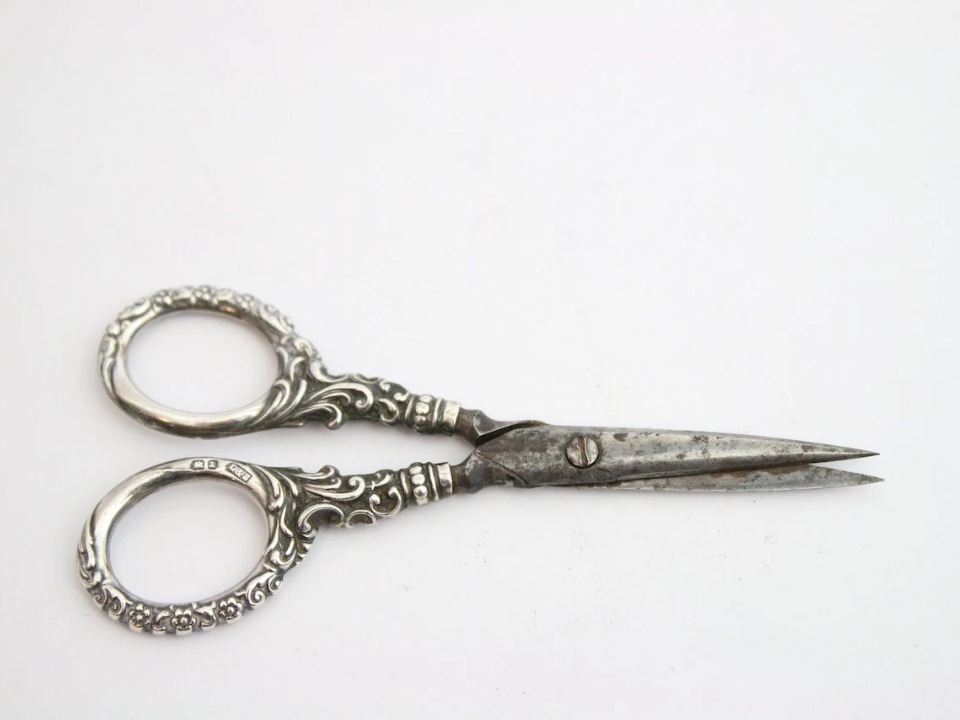
Victorian sterling scissors are a great example of how everyday tools could be transformed into pieces of art during the 19th century. These scissors often feature finely engraved handles, with some even incorporating precious metals like gold. Their design was influenced by the high standards of craftsmanship and aesthetics of the time, making them more than just a tool but a display piece as well.
When it comes to market value, scissors like these can be priced between $150–$300 in good condition. Rare makers or well-preserved examples with original cases or engravings can see prices rise to over $400, depending on provenance.
Solid Silver Tape Measure (Art Nouveau)
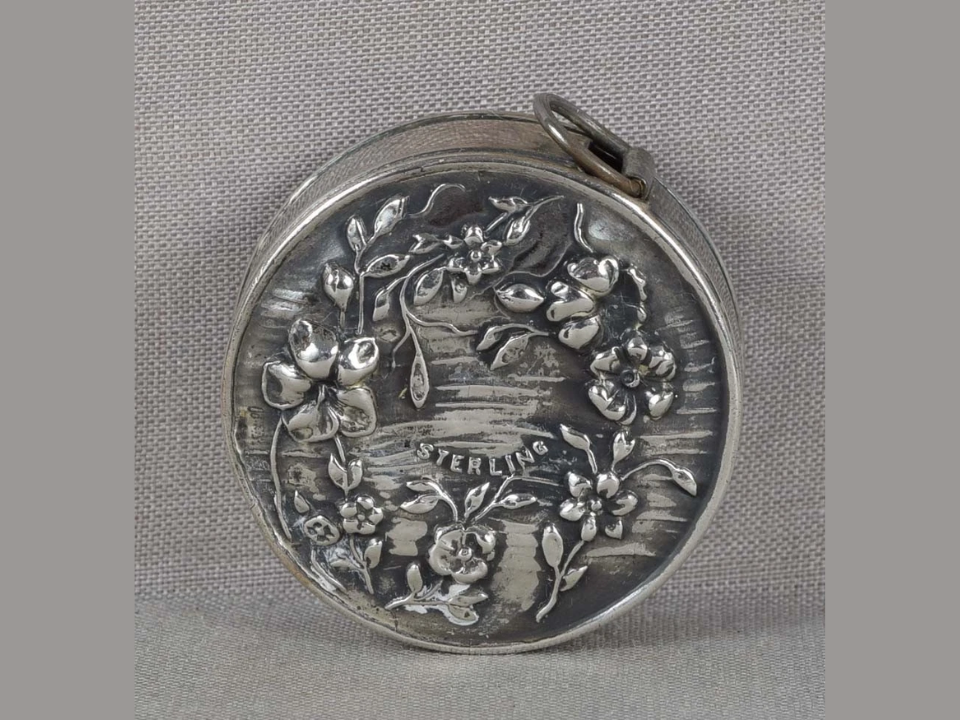
Solid silver tape measures from the Art Nouveau period are not only functional but serve as exquisite examples of craftsmanship. The silver casing, often embossed or engraved with floral patterns, complements the finely detailed retractable tape inside. These tools were designed with both utility and beauty in mind, showing the luxurious tastes of the time.
In excellent condition, an Art Nouveau tape measure can fetch $200–$400, depending on the complexity of the design and the silver quality. Pieces with maker’s marks or unique decorations can go beyond this range, especially when in their original boxes or with accompanying paperwork.
Ornate Bone Handle Sewing Awl
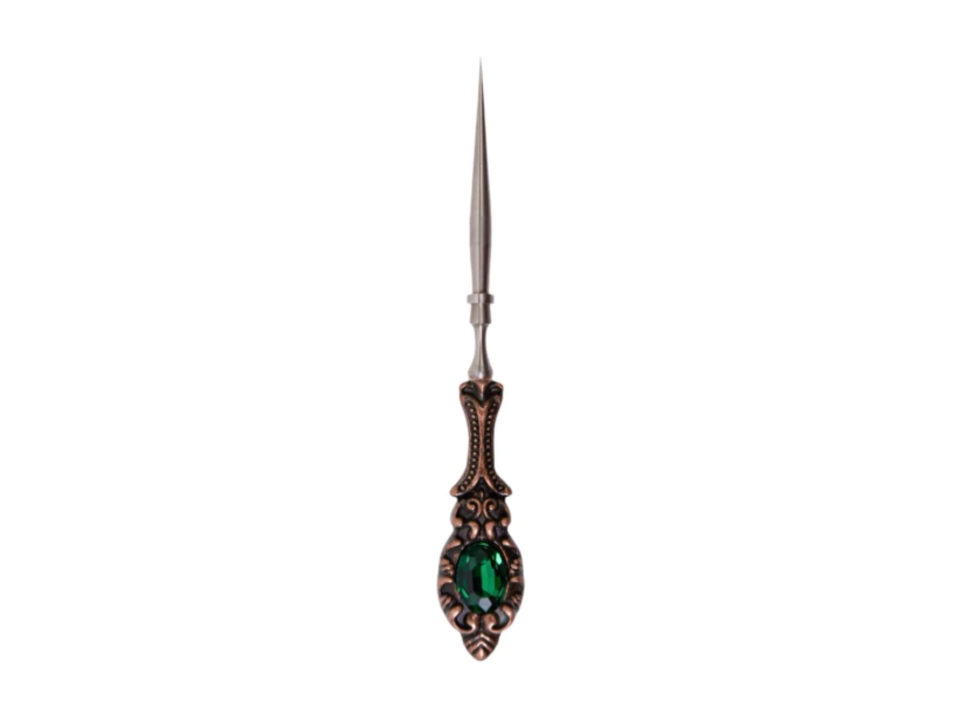
This sewing awl features an intricately carved bone or ivory handle, often adorned with floral or geometric patterns. A sewing awl was essential for piercing thick fabrics like leather or canvas, making it a vital tool in the sewing kits of experienced seamstresses. The material and craftsmanship of these awls make them collectible, as they reflect the skill and artistry involved in their creation.
Well-preserved examples may be valued at $120–$250, but highly detailed or rare pieces with distinct provenance could go for higher amounts. Their rarity in today’s market, along with the craftsmanship of their handles, contributes to their appeal among collectors.
Figural Brass Bird Clamp Pincushion

A figural brass bird clamp pincushion combines whimsical design with practicality. The bird-shaped clamp attaches to a table edge, and its tail holds a pincushion, making it both a functional sewing tool and an eye-catching decorative object. These pincushions were popular in the late 19th century and often feature intricate detailing, which enhances their collectability.
Items like these are valued around $80–$150, with those in pristine condition or featuring rare motifs reaching even higher prices. The rarity of intact pincushions and the popularity of bird designs among collectors can make them a sought-after piece.
Silver Thimble with Hallmarks
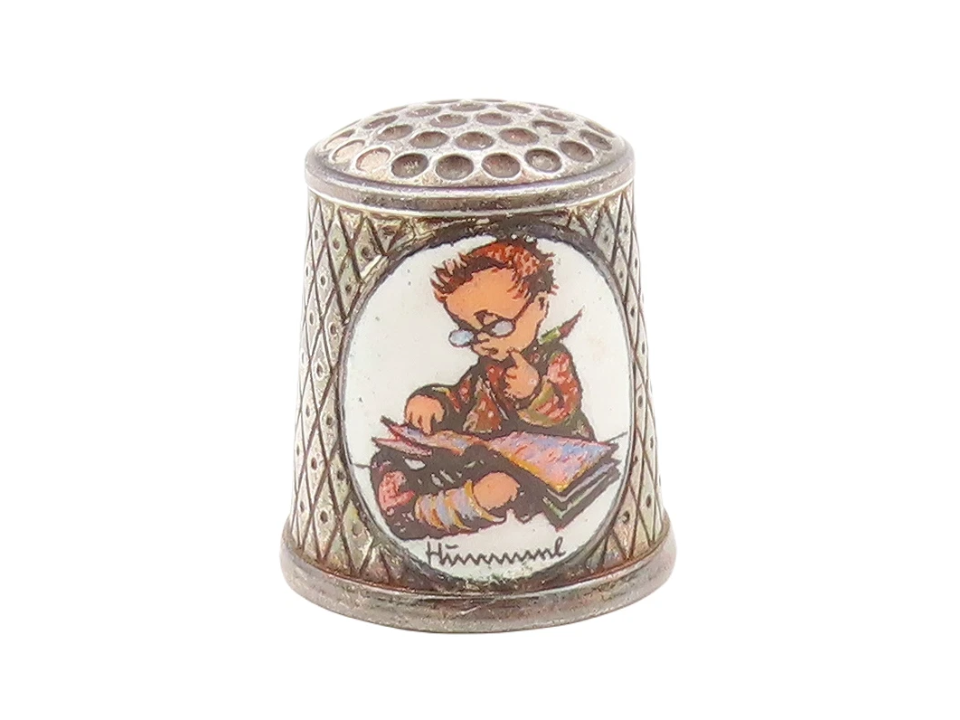
Silver thimbles from the Victorian era are a staple among antique sewing tool collectors. They were often engraved with intricate designs and stamped with maker’s marks or hallmarks, making each one unique. The precious metal and craftsmanship involved give these thimbles both functionality and aesthetic appeal, turning them into heirloom-quality collectibles.
On the market, a fine example could be valued at $100–$300, with those bearing well-known makers or exceptional engraving patterns fetching higher prices. The presence of hallmarks adds a layer of authenticity that increases its worth.
Victorian Needle Case (Etui)
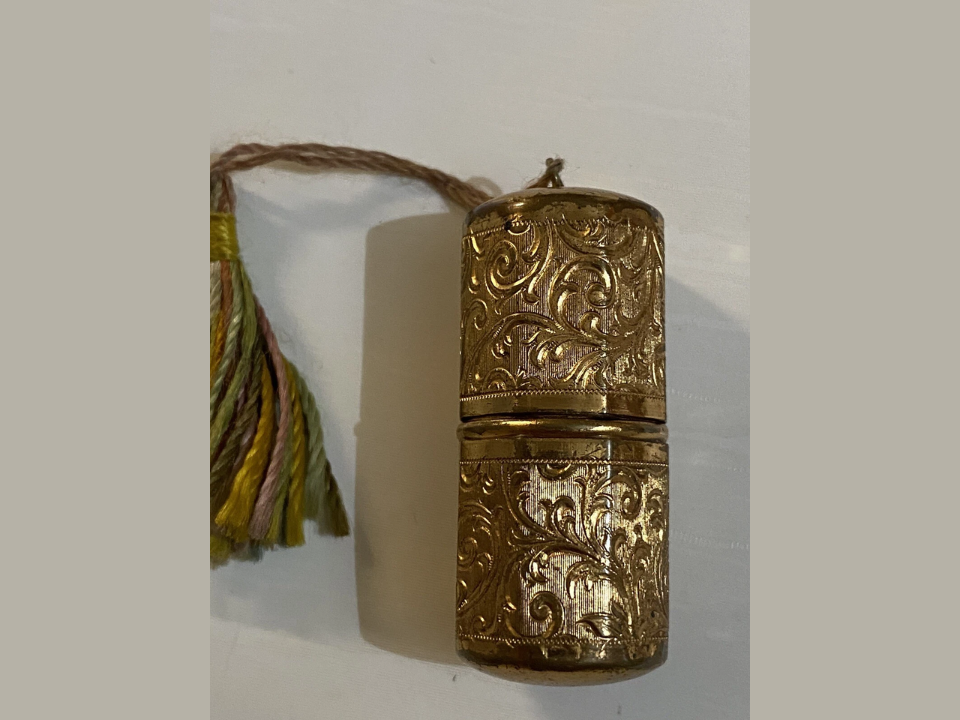
Victorian needle cases, or etuis, are small, elegant accessories designed to hold needles and sewing tools. These cases were typically made of materials like silver, ivory, or bone, and often featured detailed carvings or inlays. Some cases even came with small compartments for thread or pins, making them as practical as they were decorative.
These can command $150–$350 depending on the material, craftsmanship, and condition. Those with rare engravings, intact interiors, or maker signatures can see prices climb, especially if they were part of a larger set.
Tailor’s Heavy Duty Shears (19th Century)
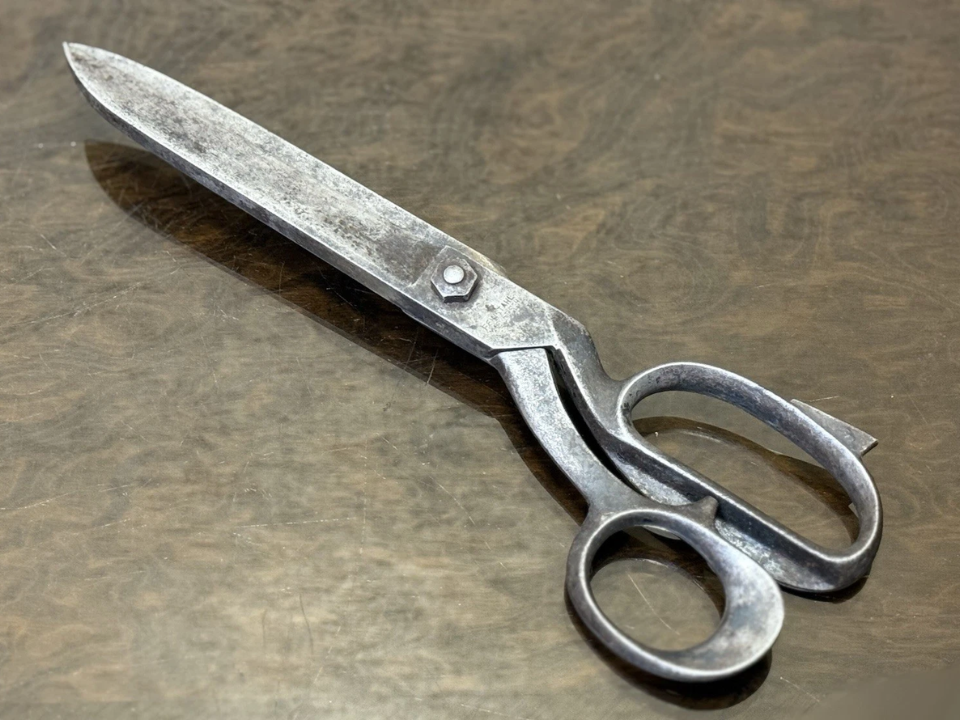
Tailor’s shears from the 19th century were crafted to handle the most demanding fabrics, such as wool or heavy cotton. These shears often measure between 12 and 15 inches and feature thick, sturdy handles, which helped tailors cut through thick materials with precision. The durability and size make them stand out among smaller, more delicate sewing tools.
A set of these shears could be worth $200–$400, especially if the original manufacturer is known or if the shears have a documented history. Shears from reputable makers or in near-original condition can command even higher prices at auction.
Palais-Royal Mother-of-Pearl Etui Sewing Kit
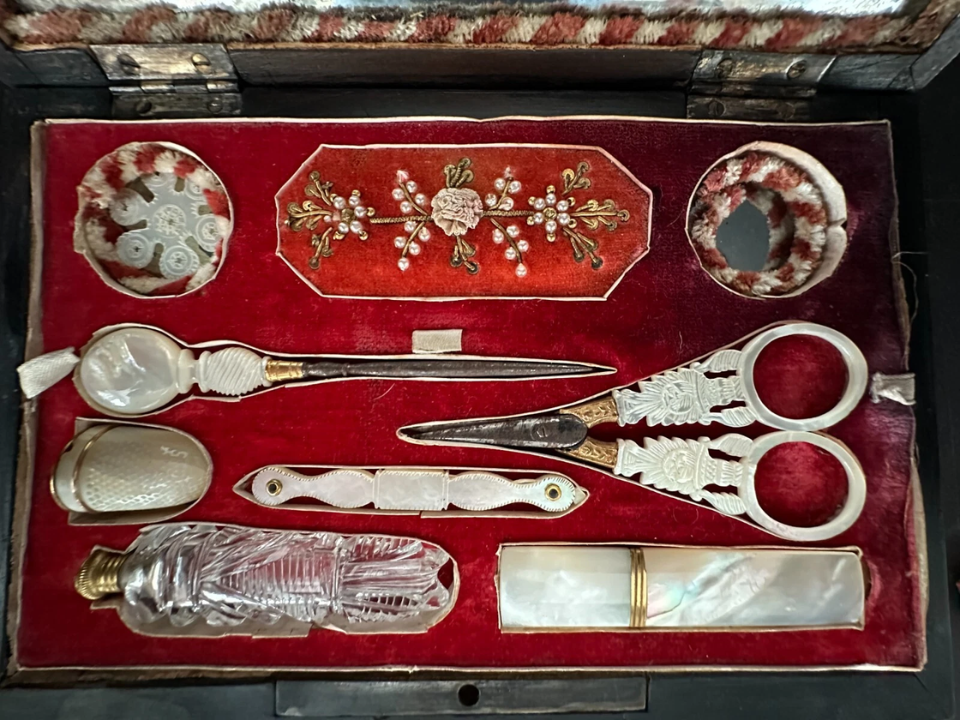
A Palais-Royal sewing kit, housed in a mother-of-pearl case, was the epitome of luxury in the early 19th century. These kits typically contain small, exquisitely made sewing tools such as scissors, a thimble, a needle case, and sometimes even a pin cushion. The mother-of-pearl exterior, often delicately carved, combined with the fine tools inside, made these sets a desirable item among the elite.
In perfect condition, these kits can be valued at $500 or more, with complete or well-preserved examples fetching up to $1,200. The uniqueness of the mother-of-pearl material and the exceptional craftsmanship behind the kit raise its value significantly.
Silver-Plated Chatelaine Sewing Set
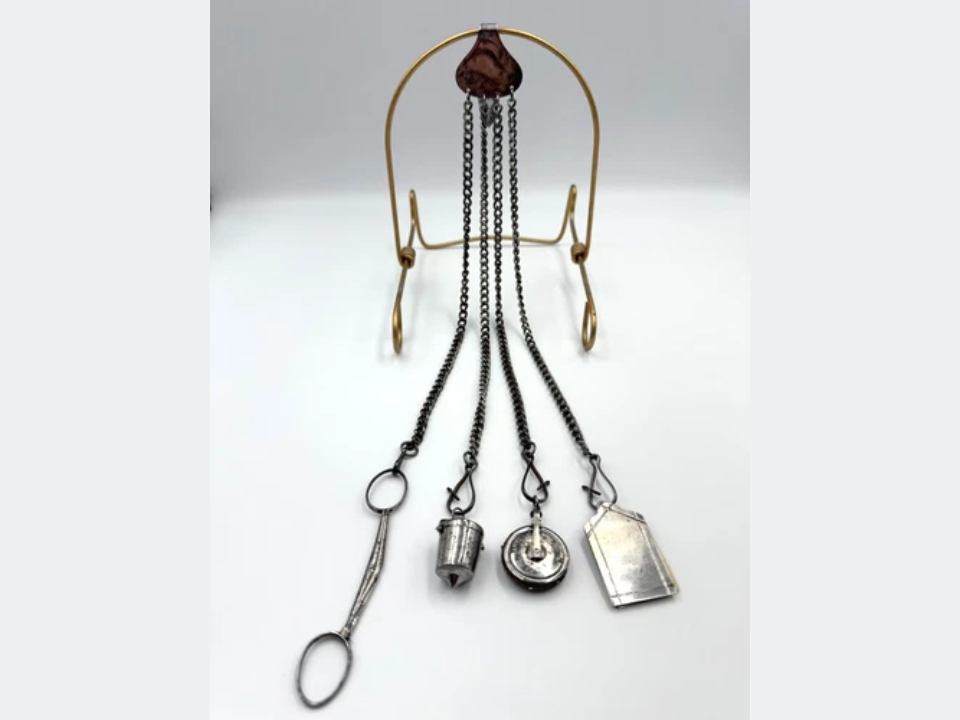
A chatelaine sewing set, often worn on the waist, features a chain that holds small, essential tools like scissors, a needle case, and a thimble. The silver-plated versions are prized for their elegance, with the chain often adorned with detailed designs or engraved initials. These sets were designed for convenience and style, allowing seamstresses to carry their tools easily while on the move.
Market value for these sets generally falls between $250–$600, depending on condition and craftsmanship. Rare pieces, or those from specific eras, can exceed these prices, especially if they retain their original patina and components.
Gilt Ormolu Sewing Necessaire Box

Ormolu sewing necessaire boxes are luxurious items that combine both function and decoration. These boxes, often made from bronze or brass with gilt decoration, were designed to store sewing tools and often include compartments for threads, needles, and scissors. The intricacy of the ormolu work and the use of fine metals make these boxes highly collectible.
Market prices for these items can range from $700–$1,200 depending on size, material, and condition. Boxes with intricate detailing or historical significance can command higher prices at auction.
Carved Ivory Needlecase with Scenes
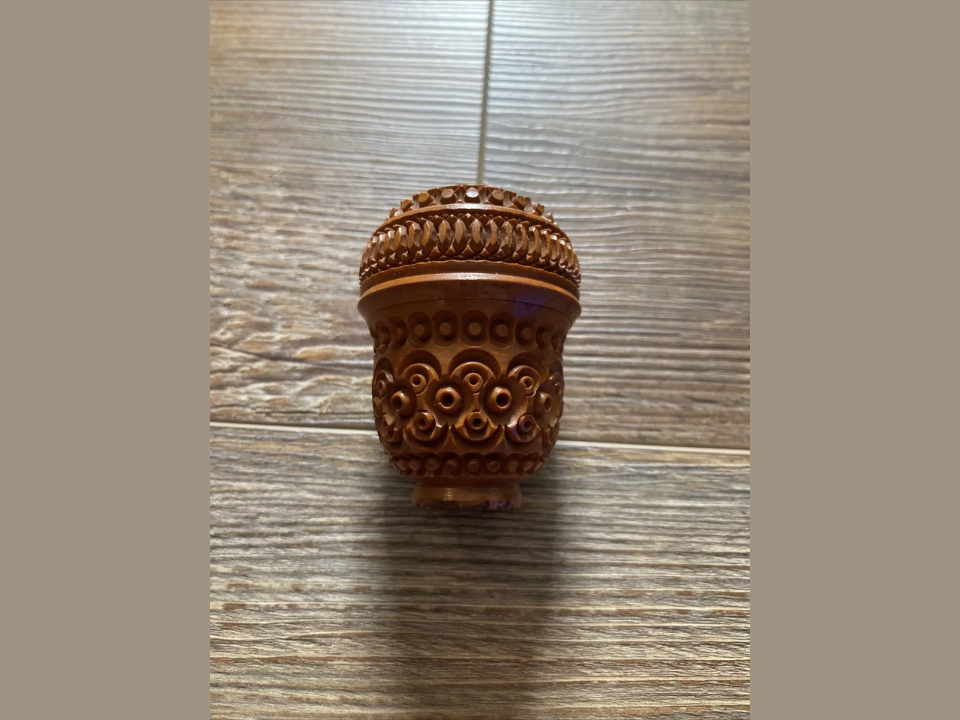
Ivory needlecases were an important tool for keeping needles organized and protected, often beautifully carved with intricate scenes. These needlecases were valued not only for their function but also for the exquisite artistry involved in their creation.
The scenes on the needlecase could depict landscapes, animals, or mythological figures, adding to their charm and desirability. A well-preserved example might fetch $200–$400, with those bearing detailed carvings or rare makers’ marks reaching higher prices.
18th Century Brass Finger Guard

The brass finger guard, worn by seamstresses, protected fingers from the sharp needles and threads of sewing. These finger guards often had a simple yet elegant design, and their durability made them an essential tool for long sewing sessions. Some were engraved with patterns or initials, enhancing their appeal to collectors.
These items typically sell for $150–$300, especially if they are from the 18th century and still in good condition. The uniqueness of the brass and its historical context as a practical tool adds value to its market price.
19th Century Tailor’s Measuring Gauge Ruler in Sterling

A tailor’s measuring gauge from the 19th century, made of sterling silver, was an essential tool for making precise measurements when cutting fabric. Its engraved markings allowed for exact measurements, while the silver material made it both durable and elegant.
The use of fine metals and the quality of craftsmanship make these rulers desirable to collectors. Typically, these items are valued at $180–$350, though rare pieces, particularly those with detailed engravings or from notable tailors, can sell for more.
This article originally appeared on Avocadu.
